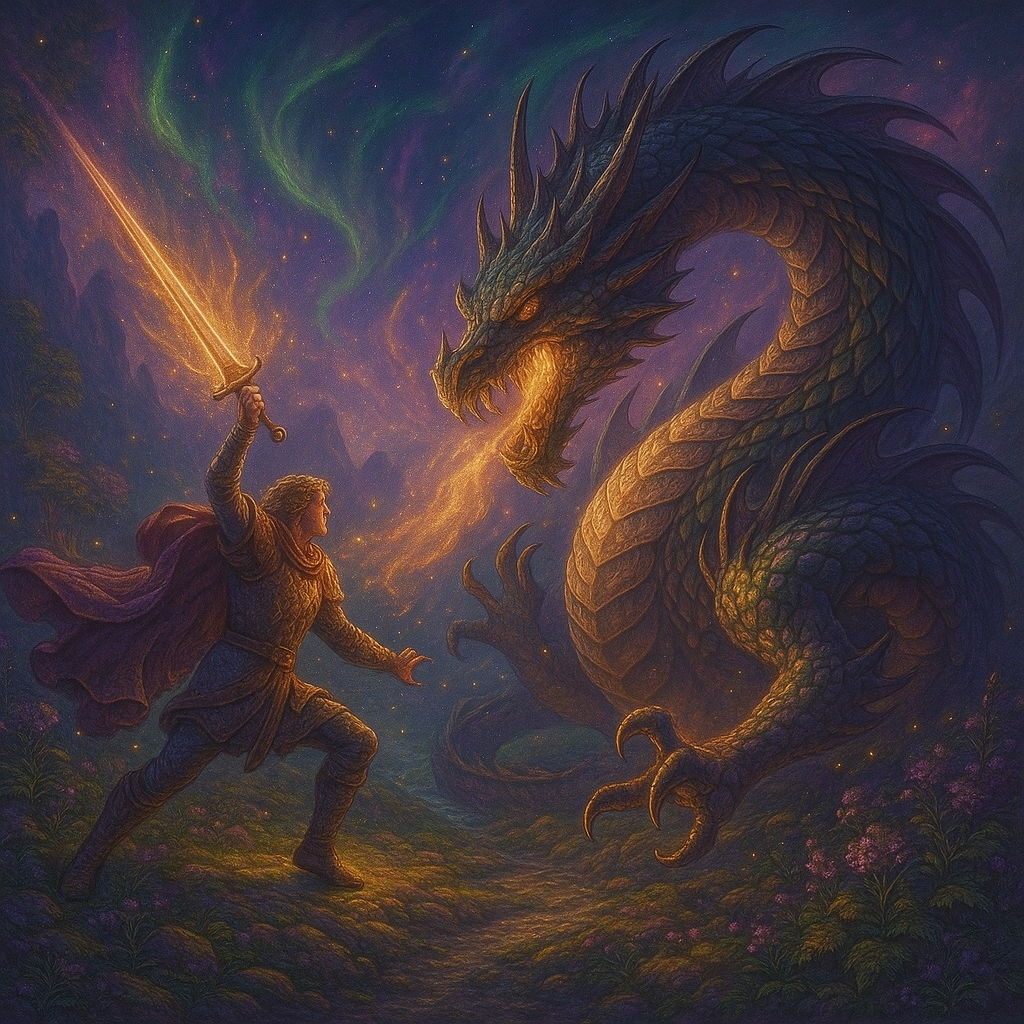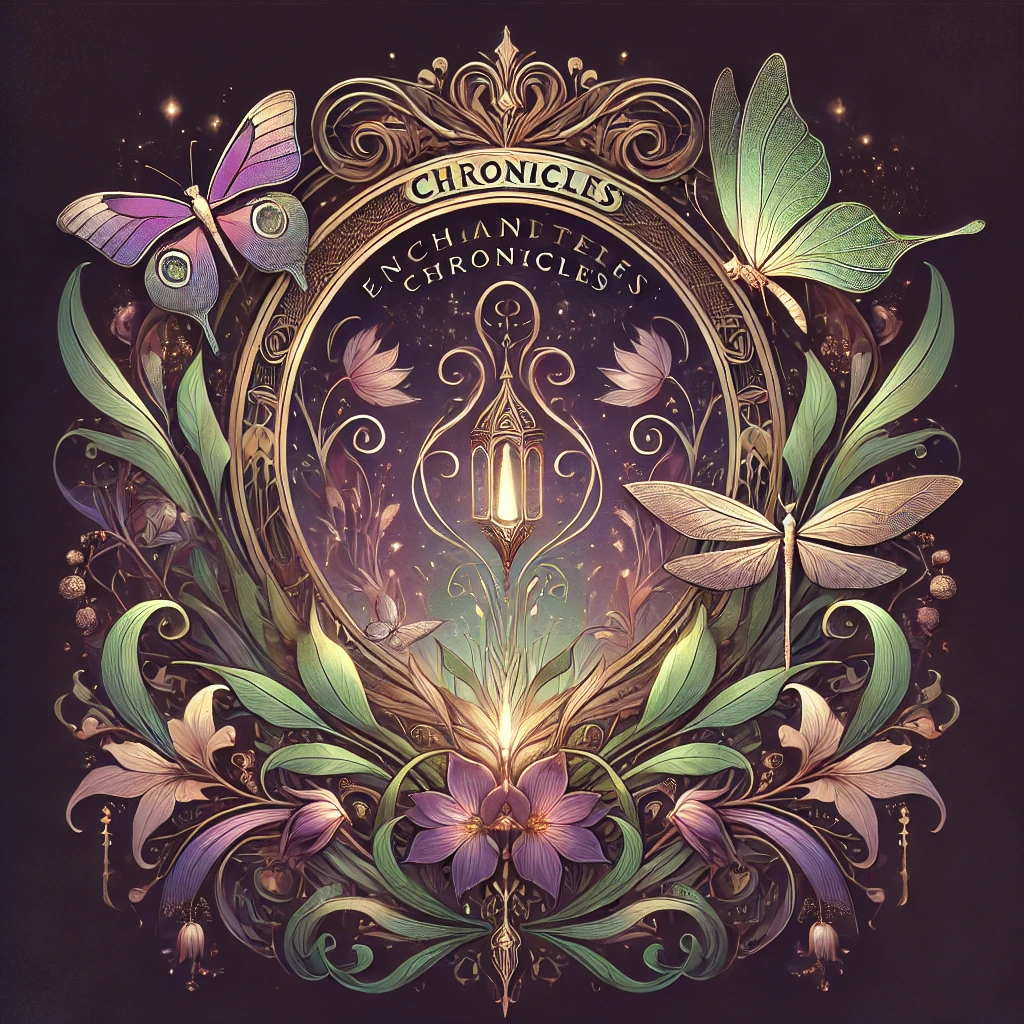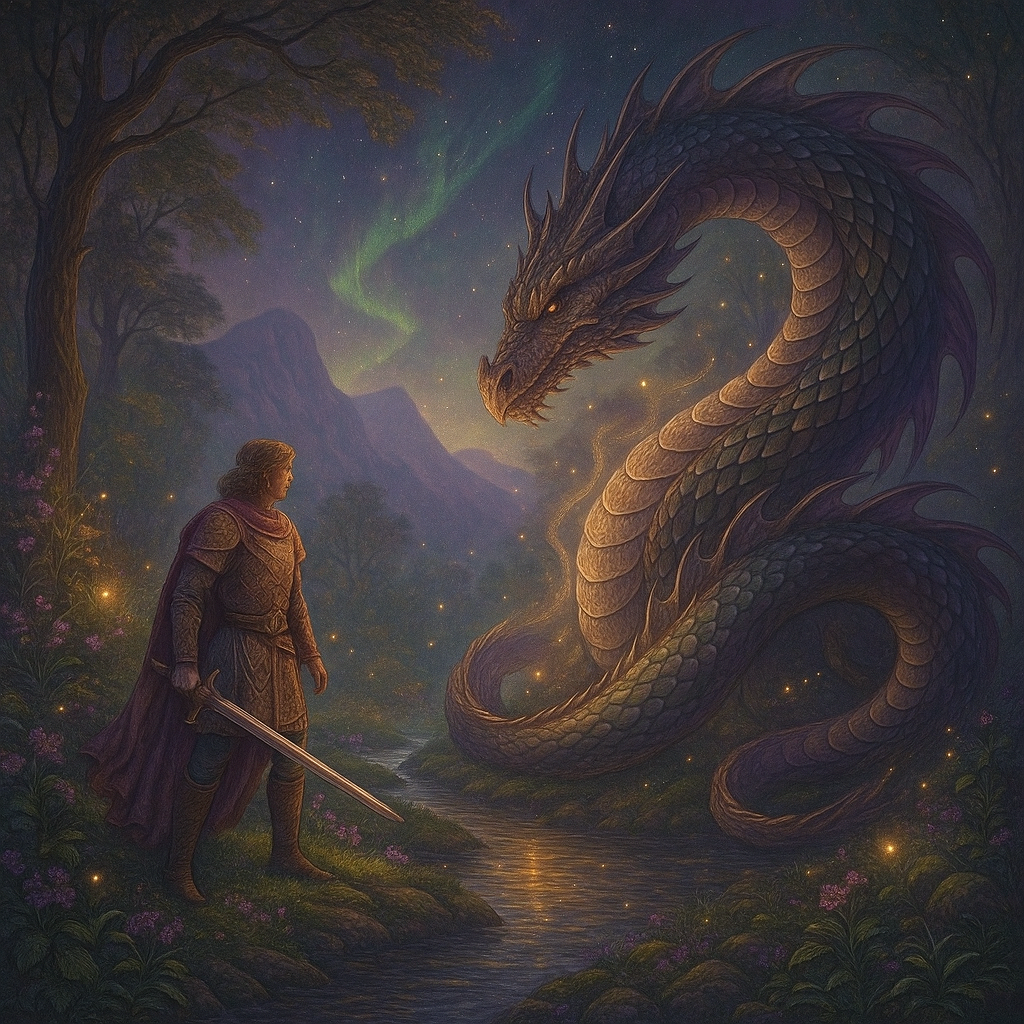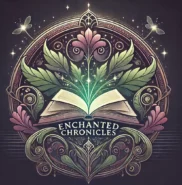
Sigurd’s Destiny: From Hero to Legend
In the misty landscapes of Norse mythology, where gods walked among mortals and fate was woven by unseen hands, one story stands out for its power, mystery, and enduring allure: the tale of Sigurd and Fafnir. This is not merely a legend of a warrior defeating a beast. It is a myth that shaped the cultural memory of Scandinavia, inspired medieval sagas, echoed into Wagner’s operas, and still captivates storytellers today.
The Birth of a Monster
The story begins with greed. Fafnir, once a dwarf, transformed into a monstrous dragon after killing his father to claim a cursed treasure hoard. Unlike many mythical beasts, Fafnir was not born a creature of fire and fang—he became one, twisted by avarice and obsession. Guarding his treasure in a desolate wilderness, he embodied the danger of unchecked greed and the corrupting weight of gold.
Sigurd, the Hero Chosen by Fate
Enter Sigurd, a warrior destined for greatness. Raised by Regin, Fafnir’s brother, Sigurd was trained to be a hero. But his quest was more than a test of strength; it was an initiation into wisdom, destiny, and transformation. With the legendary sword Gram—crafted to cut through anything—Sigurd ambushed Fafnir as he slithered to drink from a river. In a dramatic strike, he plunged the blade into the dragon’s belly, ensuring his place in the annals of myth.
A Taste of the Supernatural
Yet, the story does not end with victory. After tasting Fafnir’s blood, Sigurd gained the ability to understand the language of birds. These mystical voices warned him of Regin’s treachery, revealing that even allies could become enemies. The tale deepened: it was not just about slaying a dragon but surviving betrayal and awakening to hidden truths.
Context and Historical Echoes
The legend of Sigurd and Fafnir is rooted in the Poetic Edda and Völsunga Saga, composed during the Viking Age when oral tradition flourished. These tales reflected the values of honor, courage, and the looming shadow of fate—concepts central to Norse society. Dragons, in this cultural context, symbolized not just physical danger but the darker temptations of wealth and betrayal.
Through the medieval period, the story of Sigurd became interwoven with European folklore, influencing the Nibelungenlied in Germany and, centuries later, Richard Wagner’s monumental Ring Cycle. Each adaptation reshaped the legend but kept the essential core: a hero, a dragon, and the curse of gold.
Celebrations and Modern Legacy
In Scandinavia today, Sigurd is celebrated not only as a cultural icon but as part of national heritage. In Iceland, storytellers still share the saga at festivals, while Norway and Sweden use his image in folklore tours, historical reenactments, and museum exhibits. The imagery of dragon-slaying is even reflected in medieval carvings and Viking artifacts displayed in cultural centers across the region.
Tourists can trace the footsteps of the legend through heritage routes and Viking festivals where performances dramatize Sigurd’s epic battle. Children’s storybooks retell the tale, while modern fantasy literature and video games echo its themes. The myth has become both a historical relic and a living tradition, embodying the mysterious fusion of past and present.
Why Sigurd and Fafnir Endure
What makes the tale so magnetic, even today? Perhaps it is its layers: the monstrous greed of Fafnir, the courage of Sigurd, the warnings of supernatural birds, and the shadow of betrayal. It captures timeless human struggles—greed, trust, destiny—wrapped in the grandeur of myth.
Sigurd and Fafnir’s story is more than just folklore. It is a mirror held to the human condition, showing us both the peril of our desires and the possibility of transcendence.
Join our community of readers register for our newsletter!

Enchanted Chronicles: Ignite the Myths Within
Step into a world where ancient myths are no longer confined to books—they are part of your journey.
The Mythical Paths are selected adventures that blend legends, history, and real-world exploration.
Sign up for free!
We won’t send you spam.
Unsubscribe at any time.

